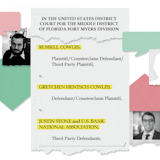Airports and airlines across Minnesota have to find a new way to put out fires, as the firefighting foams they rely on to snuff dangerous fuel blazes are being phased out.
For decades, airfields, oil refineries and military sites have used chemical foams to extinguish fires. But these products contain PFAS — a class of chemicals that have been linked to some cancers and that have widely polluted the environment. They have seeped into groundwater in many places where they have been used, including under Minneapolis St. Paul International Airport.
A new state law makes State Fire Marshal Daniel Krier responsible for setting the deadline when airports have to switch to a safer fire suppressant. But MSP’s largest carrier — Delta Air Lines — has already warned that it may need extra time.
Even as lawmakers in 2023 ordered the replacement of PFAS foams, it was clear Delta would face a unique challenge in its extensive maintenance hangars, said Rep. Matt Norris, DFL-Blaine, who authored the original bill. This year, lawmakers amended the language to specify that hangars can’t be ordered to switch until July 1, 2025.
If the airline were held to the law as it was originally written, “it would require basically shutting down all of the maintenance activities at MSP for Delta for an extended period of time,” Norris said.
Delta operates eight hangars at MSP, a maintenance operation second only to its headquarters in Atlanta. Some 15 miles of pipe snake through Delta’s fire suppression system, and the company said that moving away from PFAS will not be as easy as simply taking out one product and putting in a new one.
“Providing a safe, secure and compliant operation is Delta’s top priority,” the company said in an email. “We continue to work alongside state officials and community stakeholders to ensure our emergency fire-suppression systems in our MSP maintenance facilities meets regulatory requirements.”
The Minnesota Pollution Control Agency (MPCA) will also deliver a report on airport hangars to the Legislature in January, and that will help lawmakers set the actual deadline for hangars, Norris said.


